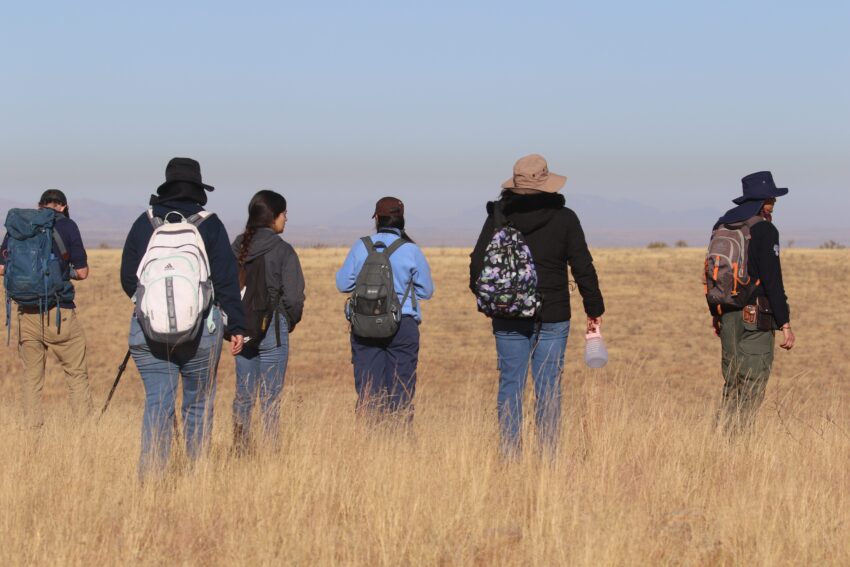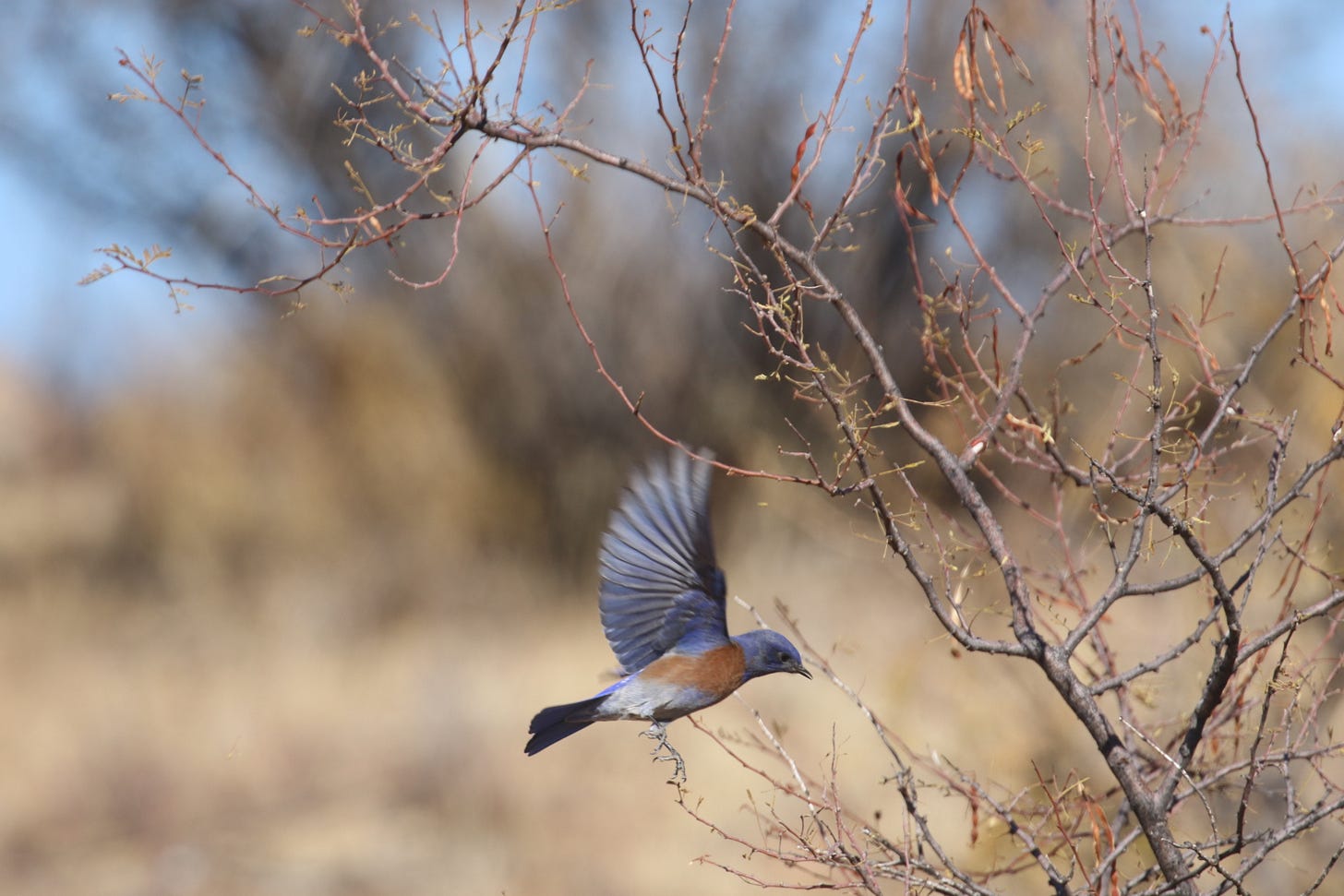This story is co-published with High Country News.
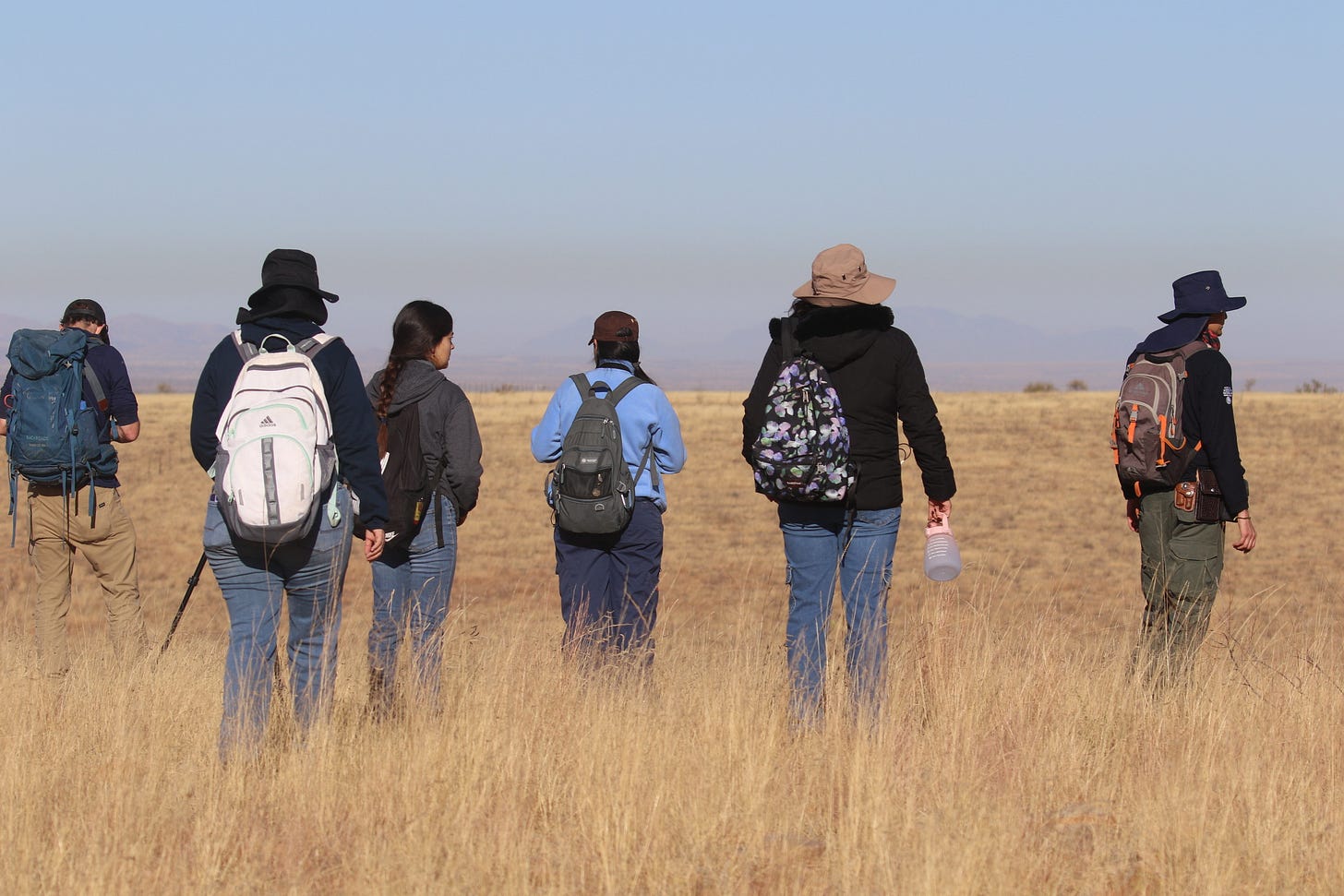
On a hillside above an oak-lined wash, 25 miles south of the U.S.-Mexico border in the state of Sonora, a norteño ballad trumpeted from a portable speaker as Eduardo de los Colores sang along, swinging a pickax at the ground. It was early February, and Colores and a group of Sonoran university students were uprooting catclaw mimosa, a thorny shrub that invades overgrazed grasslands. Once the catclaw was removed, the pasture would eventually become a seed bank for native grasses that provide crucial bird habitat.
De los Colores — known to most simply as “Colores” — is a rancher in the Sky Islands, a group of isolated mountain ranges that straddle the international border. Much of Colores’s ranch lies within the watershed of the San Pedro River, which runs north from Sonora into Arizona. The river’s binational basin is a priority for grassland bird conservation, but for 15 years, no monitoring has been conducted on the Mexican side. Now, the Tucson-based Sky Island Alliance is working with ranchers like Colores to monitor the region’s grassland birds and use restoration projects like the catclaw removal to increase their numbers.
Before sunrise the next morning, the bird-monitoring team set out from ranch headquarters in a government-issued Brigada Forestal pickup truck. Omar Siqueiros, a contract biologist with Mexico’s Commission of Protected Natural Areas, was at the wheel, and Eamon Harrity, Sky Island Alliance’s Wildlife Program Manager, rode co-pilot.
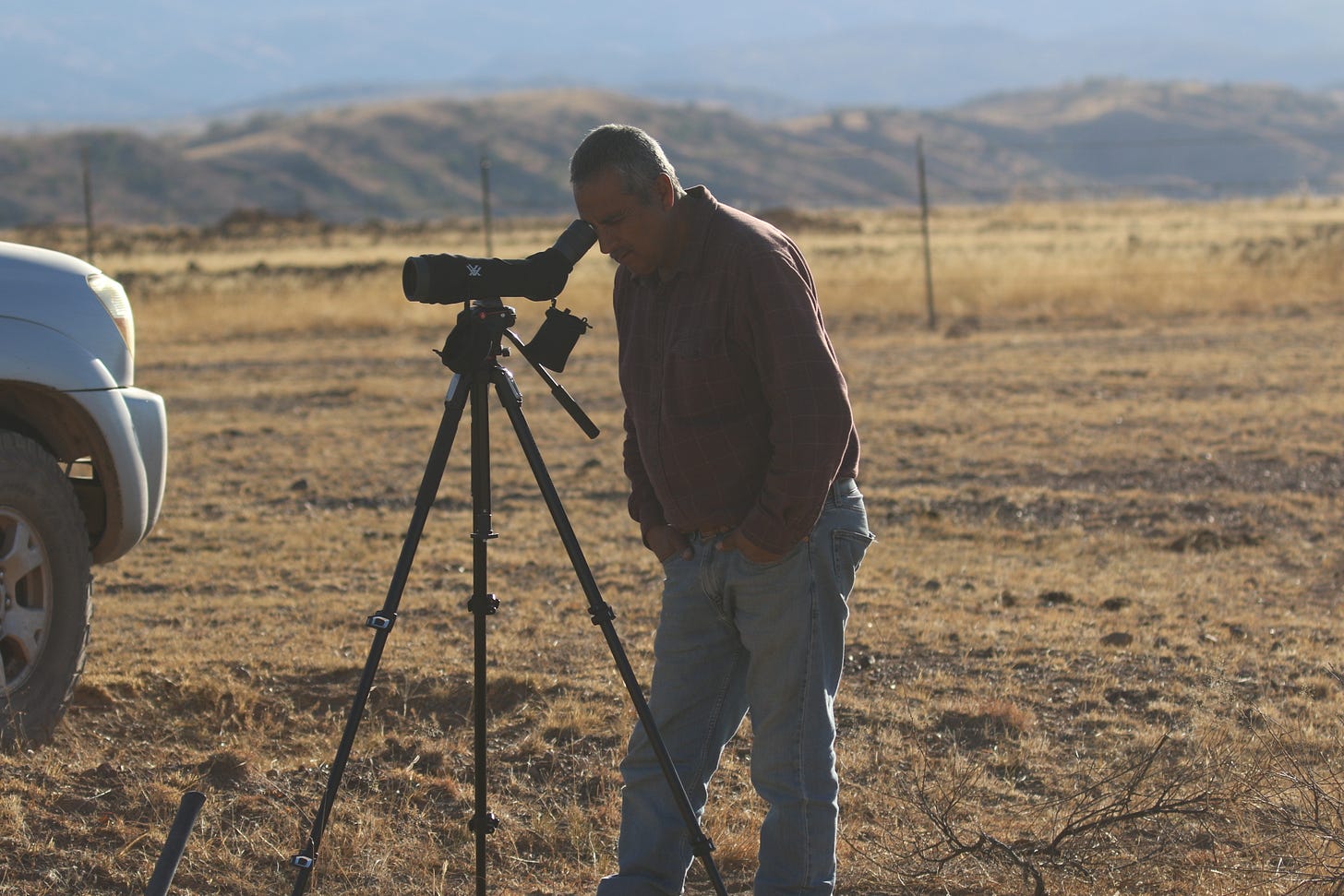
Harrity explained that winter bird monitoring helps scientists understand how changes to bird habitats outside their breeding range affects population numbers. “When we’re doing conservation of species, it’s not enough to look at where they nest,” Harrity said. “We have to understand threats along the migratory route and on the wintering grounds.”
Birds that winter in grasslands have seen some of the sharpest population declines, he explained. “Grasslands in the U.S. have been disappearing for a long time because of agricultural conversion, human (sprawl) and energy development.”
The Tucson Bird Alliance conducts regular bird counts on the Arizona side of the San Pedro River Basin, while monitoring efforts in northern Mexico have focused on the larger grasslands in the neighboring state of Chihuahua. Today, Chihuahua is seeing industrial agricultural conversion similar to that which transformed U.S. prairies a century ago. “Kilometer-square fields of alfalfa and grains,” Harrity said. “That leaves no room for sparrows.”
He and others realized that the smaller, ranching-dominated grasslands of Sonora could soon play a much greater role in sustaining grassland bird populations.
Siqueiros parked the truck, and, guided by a map on Harrity’s phone, they walked in silence, the yellow bunchgrass brushing their calves just enough to startle the birds. This was deliberate, Harrity said: “In the winter, birds aren’t perching or performing; to see them, you almost have to make them fly.”
Many grassland birds are brown and white, making the different species hard to distinguish. That morning, the most frequently seen birds were chipping sparrows. Siqueiros and Harrity also identified bluebirds; loggerhead shrikes, which have white bellies and black masks; ladder-backed woodpeckers, whose black backs are spotted with lines of white dots; and phainopeplas — “goth cardinals,” as some birders call them, citing their black plumage and pointed crests. There was also a northern harrier, a raptor with a long striped tail. In heavily grazed areas, however, they saw only alondras or horned larks, which have black feathers that stick up from their heads. “But it’s also beneficial to monitor in areas that aren’t as good, to get the data,” said Harrity.
On the way back, they counted grass species instead of birds: blue grama (called navajilla) and side-oats grama (banderita), Lehman’s lovegrass, three-aw and several species of muhly.
As the biologists headed back to the truck under a hard noon sun, something jumped out of the tall grass. It was a grasshopper sparrow, or gorrión chapulín (pronounced “shapulín” in the regional accent of Sonora) — a species they were especially interested in counting and one that has experienced large population declines. Grasshopper sparrows don’t often fly, Harrity explained; they jump, run, then jump again.
They were also keeping an eye out for chestnut-collared longspurs, or escribanos, a species that has lost nearly 90% of its population since monitoring began in 1966. Both Harrity and Siqueiros had been pleasantly surprised to see sizeable flocks during previous outings.
In the evening, Colores lit his grill to make carne asada while his students helped make guacamole and pico de gallo under a concrete pavilion a few steps away. It was so warm that few gathered around the campfire. Overhead, the tall cottonwoods were blooming, something Colores could not remember seeing in February before.
Spatula in hand, Colores explained that when he was growing up, the region’s rangeland was held communally. After it was privatized in the 1990s, he and his brother bought small parcels and gradually assembled a ranch. Five years ago, Colores became interested in incorporating conservation practices into his work, after the nonprofit wildlife organization ProFauna, based in the state capital of Hermosillo, organized a series of workshops for the local cattlemen’s association.
“The thing that surprised me most was about pumas,” he said. “We used to have a lot of problems with them. They would kill the calves and foals. And how did we respond? Well, he killed something of ours. So we got angry, and we wanted to kill, too. … We would ride up to where the pumas live, the dogs would start to sniff them out and we’d be behind them, on our horses. And we’d have our rifles; we even had an agreement with our neighbors where we could cut fences so that we didn’t waste time getting to gates, we came prepared with pliers and everything — all for the pumas.”
After the conservation-ranching workshops, Colores said, he entered a program to limit white-tailed deer hunting on the ranch. He discovered that when the deer hunting stopped, he stopped losing calves.
“The puma was just hungry, that’s why he was killing our animals,” said Colores. “That surprised me.” Colores began tackling other projects suggested by ProFauna, the Commission of Protected Natural Areas and Sky Island Alliance, building water-retention structures to create wildlife oases and starting a native tree nursery to supply saplings for restoration projects. The new seed bank has a similar goal: Colores expects to be able to sell the native grass seeds in Arizona, where habitat restoration efforts have created a demand for them.
Zach Palma, who manages Sky Island Alliance’s projects in Mexico, said ranchers like Colores are leading the way. “It can be harder for older ranchers to change their management practices, even if they’re seeing the effects of climate change,” Palma said. “Eduardo’s ranch has become a demonstration site of what you can do.”
Gradually, some of Colores’ neighbors have become interested in conservation as well. “They’re seeing that these are good things to be doing. They call me and say, ‘Hey, are you having a class at your ranch? Invite me. Do you really have a nursery there? Is it true that you’re doing conservation projects at the ranch?’ They all have questions.”
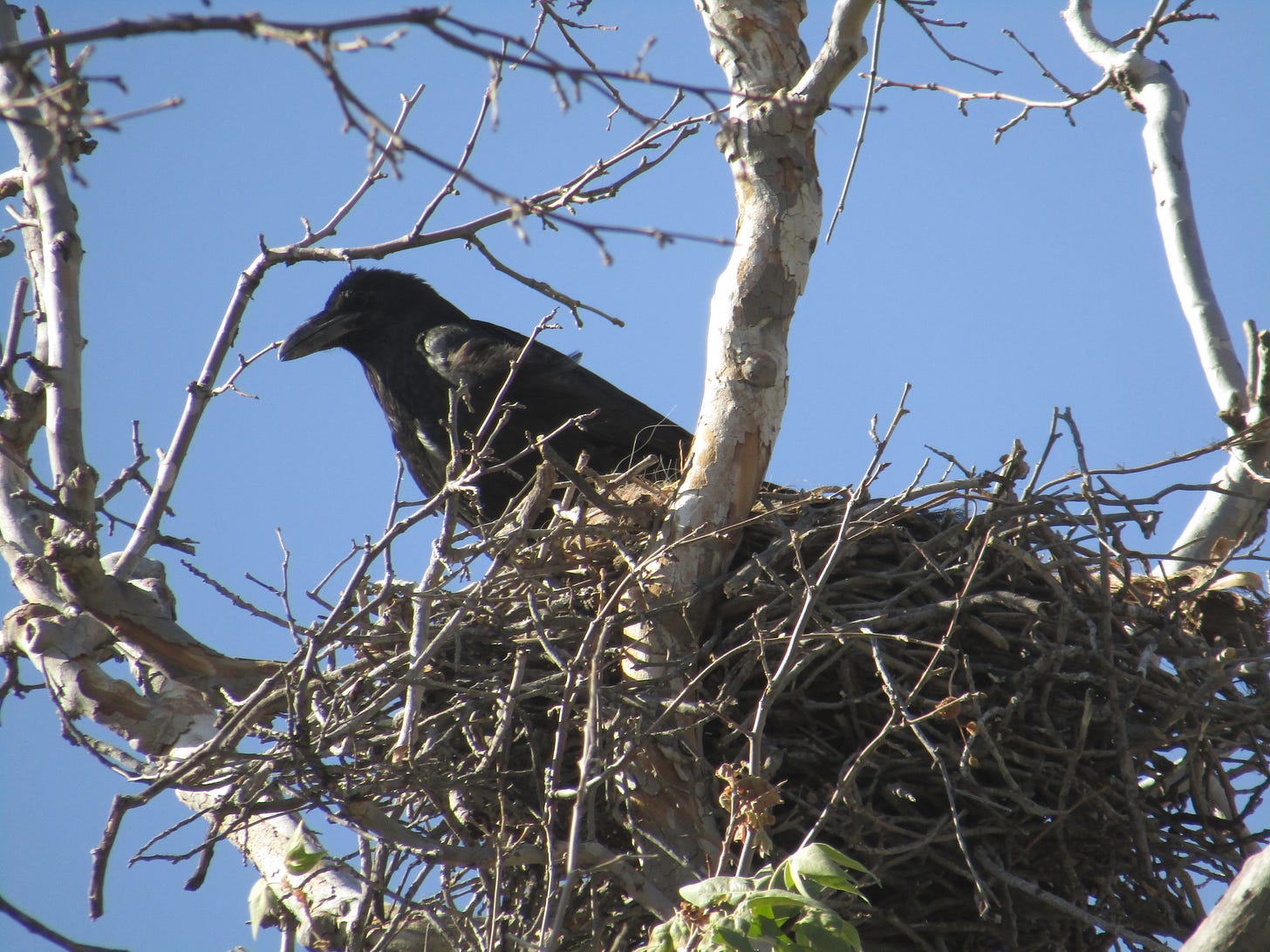
In March, at the end of the monitoring season, Sky Island Alliance sent its data to the Bird Conservancy of the Rockies, which will incorporate it into a database used to study trends in grassland bird habitat and migration. Meanwhile, Palma, Colores and the university students will continue removing catclaw and tending the native-plant nursery. The effects of the restoration work could reverberate throughout the birds’ entire migration pathways, Harrity said, adding, “Landscapes are connected, and borders are arbitrary.”
Politically, managing binational conservation programs is becoming more complicated. The funding for Sky Island Alliance’s project came from the Neotropical Migratory Bird Conservation Act, a program that the so-called Department of Government Efficiency has targeted for review and potential elimination.
The political situation is making life in the Borderlands harder for birds as well. Since 2019, Customs and Border Protection has installed 2,000 stadium lights atop Arizona’s border wall, though it has not turned them on outside of urban areas. A 2023 report by the Center for Biological Diversity warned that activating these lights would disrupt migratory bird pathways by causing collisions and interfering with the birds’ ability to navigate using natural light cues in the environment.
Colores hopes the conservation work at the ranch can continue. “It makes me happy when people come to do their research here,” he said. “Me hace sentir vivo” — it makes me feel alive.
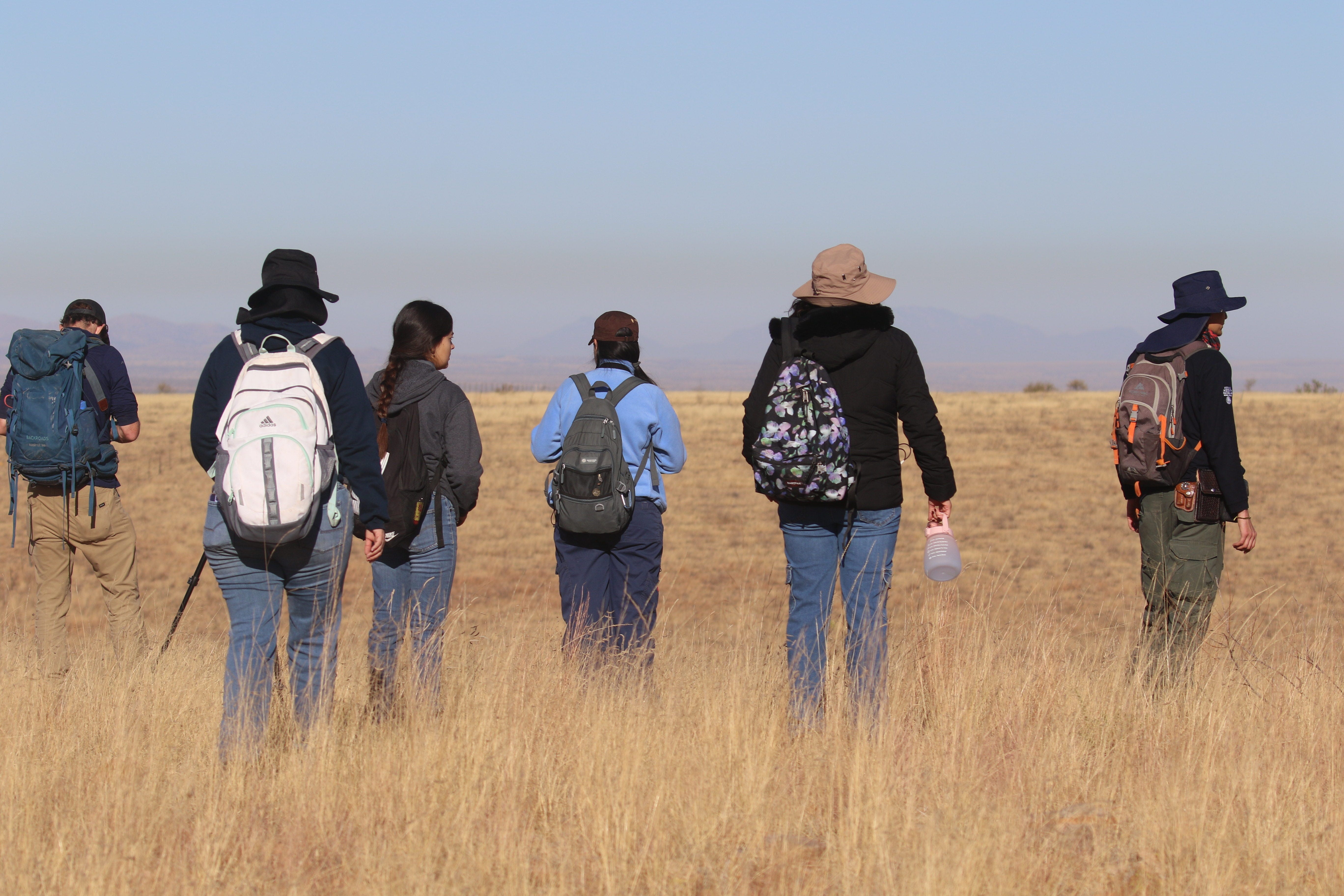 Read more: Read More
Read more: Read More




